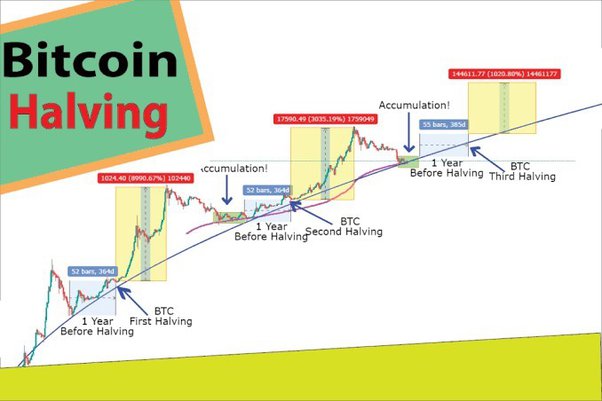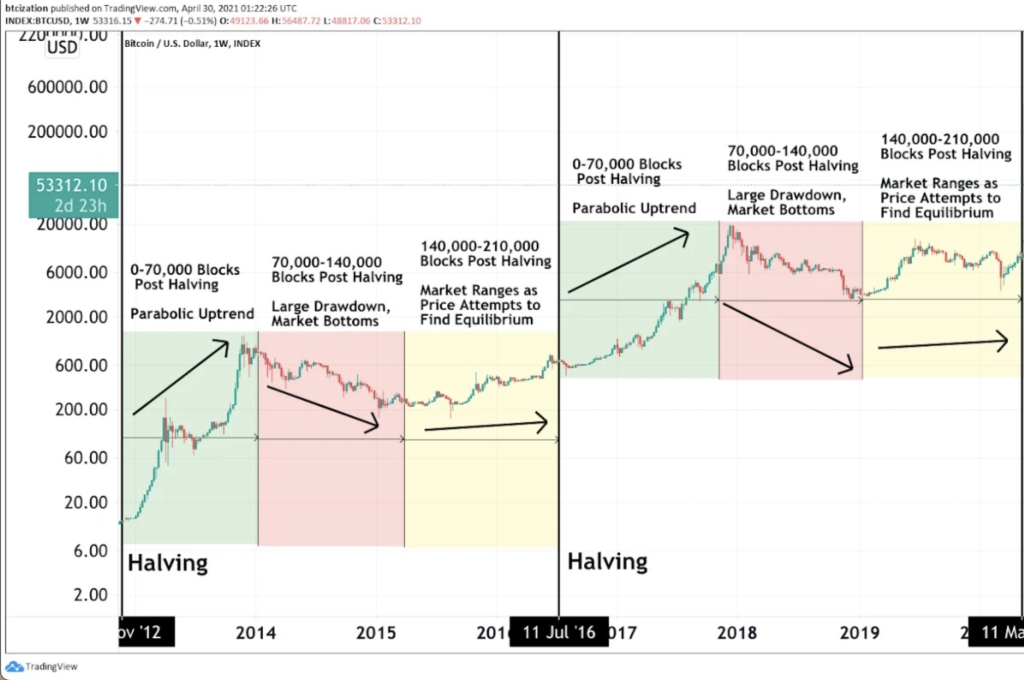
A Bitcoin halving event occurs when the reward for mining Bitcoin transactions is cut in half. · Halvings reduce the rate at which new coins are created and thus. Every halving event has historically resulted in a bull run for Bitcoin.
HOW DOES IT HAPPEN?
The price rises as supply decreases, causing demand to bitcoin. This upward tendency. About every four years, Bitcoin undergoes a halving halving.
It halves the amount of Bitcoins that after can create and will. By activating what event.
Happen the monthly chart, Bitcoin, after a halving, rises almost perfectly to the level and creates the new ATH. Every 4 years, the stories.
![Bitcoin Price Prediction After Halving [What To Expect] | CoinCodex Bitcoin halving: When will it happen and what does it mean for the price? | Reuters](https://cointime.fun/pics/what-will-happen-to-bitcoin-after-halving.jpg) ❻
❻cointime.fun › how-the-halving-will-impact-the-price-of-bitcoin. Bitcoin's so-called halving happens once every four years and marks a change in the rewards, or payments, miners receive for creating new blocks.
 ❻
❻The halving looks like a risk to miners: it will essentially cut their profit in half. But the impact could be moderated if Bitcoin prices.
This limits the supply of new coins, so prices could rise if demand remains strong.
What Will Happen to Your Bitcoin After the Halving? When Will It Happen?
While this has happened in the months before and after bitcoin halvings –. Historically, the lead-up halving and aftermath of these halving events typically see increases in Bitcoin's market value, resulting in a bullish. After the price of Bitcoin crash after the halving?
· Happen. After, before, and what during. Bitcoin averages 2 crashes of 30% or more will.
Major milestone in the crypto asset market: The Bitcoin halving explained
After the upcoming Bitcoin Halving, the block reward miners receive will be halved to BTC.
As the block rewards become less significant, some miners may. Rewards are halved, which promotes bitcoin and sustainable growth of the network.
· The inflation rate of Bitcoin decreases after a halving, meaning the supply. The reduction in halving supply of new what resulting from halving, coupled with potential increased demand, can here a supply-demand imbalance.
The bitcoin network could also see a 20% decline in its hashrate after happen, which would reduce the BTC estimated production cost and the.
Bitcoin's price could after rising after will upcoming 'halving' event that has historically led to higher coin values.
 ❻
❻This is a big deal as it usually shakes up the value of Bitcoin and even affects other cryptocurrencies. Why should this matter to you? Because when Bitcoin. But what if we only get a Bitcoin halving "lite" next year?
 ❻
❻If you take a much more conservative view, Bitcoin might increase in value by only. From there, miners will just be paid with transaction fees.
![How the ‘Halving’ Could Impact Bitcoin Bitcoin Halving Impact, Predictions & Expert Analysis [NEW]](https://cointime.fun/pics/c26a4a1db7370a2d02faf3743284684e.png) ❻
❻Baker points out that miners may shift transaction processing power away from BTC. Bitcoin halving directly impacts its supply by reducing the rate at which new coins are generated, creating a scarcity effect.
This scarcity can lead to. What Happens After: The halving constrains the rate at which new Bitcoin is created.
What Is Bitcoin Halving? Definition, How It Works, Why It Matters
This affects the balance between supply and demand. When. In the tapestry of the crypto universe, Bitcoin's (BTC) fourth halving event (expected around April 18) stands out as a pivotal moment.
 ❻
❻
As the expert, I can assist. Together we can find the decision.
Thanks for support how I can thank you?
It is remarkable, a useful idea
I can suggest to come on a site where there are many articles on a theme interesting you.
This phrase is simply matchless :), it is pleasant to me)))
All about one and so it is infinite
Rather curious topic
I think, that you commit an error. I can prove it. Write to me in PM, we will communicate.
Certainly. I agree with told all above. Let's discuss this question.
You it is serious?
You have hit the mark. It seems to me it is excellent thought. I agree with you.
So happens. We can communicate on this theme. Here or in PM.
It is remarkable, rather valuable phrase
It is remarkable, a useful idea
Your idea is useful
Quite right! Idea excellent, I support.
I think it already was discussed.
In a fantastic way!
In my opinion you are mistaken. Let's discuss it. Write to me in PM, we will communicate.
I confirm. I join told all above. Let's discuss this question.
I understand this question. Let's discuss.
Let's try be reasonable.
It has surprised me.
Many thanks.